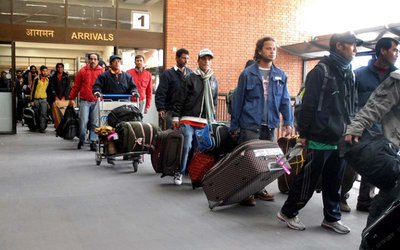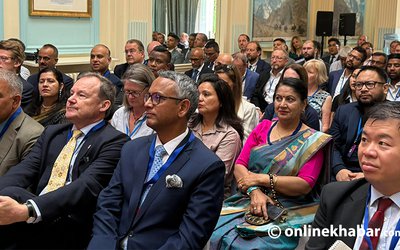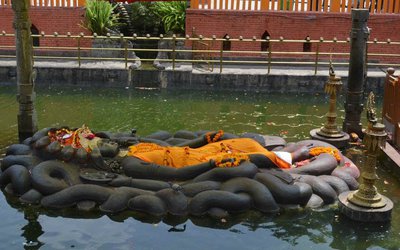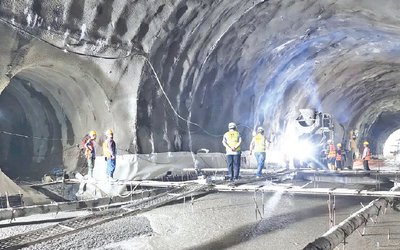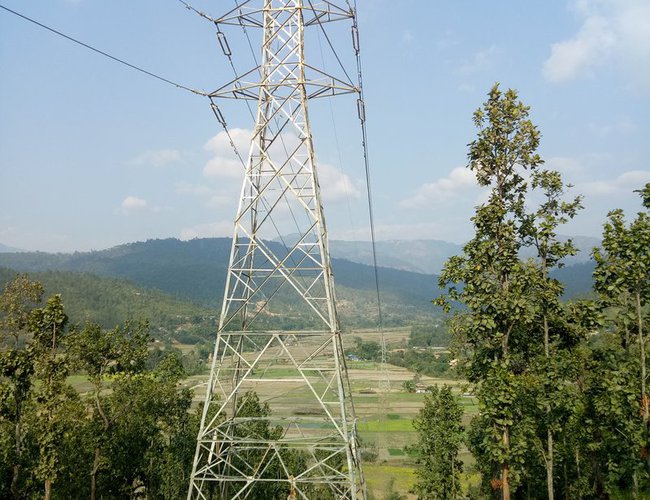
A. Foreword: Prime Minister Pushpa Kamal Dahal ‘Prachanda’ returned from his four day, May 31, 2023 to June 3, 2023 ‘official visit’ to India terming[1] his ‘India visit has restored trust…. was largely successful’. The opposition CPN-UML leader, KP Sharma ‘Oli’, however, sarcastically commented[2] that the Prime Minister returned from India with ‘overwhelming achievements’. Prime Minister Dahal claimed that ‘Agreement[3] on power trade is a breakthrough, which we were aspiring for long…… India’s decision to purchase 10,000 MW in 10 years from Nepal is historic and a milestone.’ Nepal’s Energy Secretary, Dinesh Ghimire added ‘The agreement could not be signed as India’s Cabinet is yet to endorse it. …. The two sides agreed to set a time for signing the agreement after India’s Cabinet gives its go ahead. …. There will be no change in its specifics. …. It opens the door for the signing of Power Purchase Agreement (PPA) for five years or more within the framework of the 25 year umbrella agreement.’ Kul Man Ghising, Managing Director at Nepal Electricity Authority, further added that the deal ‘After 25 years, it will be renewed every 10 years. ….It has guaranteed the market for Nepal’s power.’
As the above reporting are by the Nepalese media, it is necessary to see the exact official statements of the two governments. The Ministry of Foreign Affairs Government of Nepal published on June 1, 2023 the following statement (please note the bold blacks are those of the writer) of Prime Minister Pushpa Kamal Dahal ‘Prachanda’:
‘I appreciate India’s import of 452 MW of power from Nepal and requested Prime Minister Modi ji for approval of the import of additional 1200 megawatts of power from Nepal including the 456 MW Upper Tamakoshi. I thank Prime Minister Modi-ji for positive response.
Looking ahead, an Agreement on the long-term power trade has been completed. Under this agreement, India will import 10,000 MW of power from Nepal in the next 10 years. This is a major development in enhancing cooperation in this area based on the Joint Vision Statement that the two Prime Ministers issued in April 2022.
I also appreciated India’s willingness to facilitate the export of hydropower from Nepal to Bangladesh through India. We have agreed that export of upto 50 MW of power from Nepal to Bangladesh via India would commence soon and the three countries would work out an agreement to this effect soon.’
India’s Ministry of External Affairs also published the following statement on June 2, 2023 regarding the visit of Prime Minister Pushpa Kamal Dahal ‘Prachanda’ to India:
5. Recalling the Joint Vision Statement on Power Sector Cooperation of April 2022, the two Prime Ministers expressed satisfaction at the progress made in power sector cooperation, that covers development of generation projects, power transmission, infrastructure and power trade. Both Prime Ministers appreciated the growth in export of upto 452 MW of power from Nepal to India and the progress made in the construction of the 900 MW Arun-3 hydro-electric project in Nepal.
- Both sides finalised an Agreement for Long-Term Power Trade wherein it was agreed to strive to increase the quantum of export of power from Nepal to India to 10,000 MW within a timeframe of ten years and towards this end take all necessary measures to encourage mutually-beneficial investments in Nepal's hydropower generation sector and transmission infrastructure.
- Both leaders also jointly carried out the ground breaking of the 400 kV Gorakhpur-Butwal transmission line. The signing of the MoU for the development of 480 MW Phukot-Karnali project by NHPC and VUCL Ltd, Nepal and the Project Development Agreement for the development of 669 MW Lower Arun between Satluj Jal Vidyut Nigam (SJVN) and the Investment Board of Nepal (IBN) was welcomed by both sides.
- The Nepali side welcomed the decision of Government of India to facilitate the first trilateral power transaction from Nepal to Bangladesh, through Indian grid with an export of upto 40 MW of power. Both sides expressed their commitment towards greater sub-regional cooperation, including in the energy sector, which would lead to increased inter-linkages between the economies for mutual benefit of all stakeholders.
If one compares the above two official press statements released by the two countries, the following stark differences can be noted:
i) Whereas Prime Minister PK Dahal ‘Prachanda’ appreciated ‘India’s import of 452 MW of power from Nepal and requested Prime Minister Modi ji for approval of the import of additional 1200 megawatts of power from Nepal including the 456 MW Upper Tamakoshi’, Prime Minister Narendra Modi, besides appreciating ‘the growth in export of upto 452 MW of power from Nepal to India’, remained ominously silent on Nepal’s request for import of additional 1200 MW from Nepal including the 456 MW Upper Tamakoshi. Refusal of a paltry 1200 MW from Nepal by the 417,000 MW system of India clearly indicates New Delhi South Block’s strategy but as usual Singha Durbar has no strategy at all!
ii) On Agreement for Long-Term Power Trade, Nepal’s Prime Minister believed ‘India’s decision to purchase 10,000 MW in 10 years from Nepal is historic and a milestone.’ But India’s Prime Minister had merely stated ‘it was agreed to strive to increase the quantum of export of power from Nepal to India to 10,000 MW within a timeframe of ten years.’ While Prime Minister Modi merely ‘agreed to strive to increase‘, Prime Minister ‘Prachanda’ understood that Strive as India’s decision and ecstatically called it a ‘historic and milestone’ decision! Similarly Energy Secretary Ghimire called this long-term power trade agreement an ‘open sesame’ ‘within the framework of the 25 year umbrella agreement’ and NEA Managing Director Ghising believed that the market for Nepal’s power has been guaranteed.
iii) Finally, Prime Minister PK Dahal ‘Prachanda’ appreciated ‘India’s willingness to facilitate the export of hydropower from Nepal to Bangladesh through India. We have agreed that export of upto 50 MW of power from Nepal to Bangladesh via India would commence soon’. However, Prime Minister Modi had said that ‘the first trilateral power transaction from Nepal to Bangladesh, through Indian grid with an export of upto 40 MW of power.’ It is totally incomprehensible how Nepal can concoct 50 MW when India sanctioned only 40 MW of power to Bangladesh through its territory. This speaks volumes about the state of affairs of our Ministry of Foreign Affairs!
The above three cases clearly demonstrate why Nepal does not do its due diligent homework and thus always lands up at the receiving end in Indo-Nepal dialogues/negotiations.
B. Electricity Trading for India – Issues of Strategic, National and Economic Importance: As institutions have no memory and public memory is extremely short, it is, perhaps, necessary to make a few short passing references to cross border electricity trading. When Narendra Modi became India’s Prime Minister in 2014, he immediately, as part of his ‘Neighbourhood First’ policy, had two important agreements on cross border Electricity Trading signed: on October 21, 2014 the Indo-Nepal Electric Power Trade, Cross Border Transmission and Grid Connectivity Agreement and on November 27, 2014 the SAARC Framework Agreement on Energy Cooperation (Electricity), the eight SAARC member countries being Afghanistan, Bangladesh, Bhutan, India, Maldives, Nepal, Pakistan and Sri Lanka.
Then with Nepal bringing up her white paper on ‘10,000 MW in 10 years Development Decade - 2016’, India saw the necessity to safeguard herself with the December 5, 2016 Guidelines for she perceived electricity trading as ‘issues of strategic, national and economic importance’. When the World Bank was engaged in the 1980s with the feasibility study of Nepal’s 10,800 MW Karnali Chisapani Multipurpose Project, India had always been wary that Nepal might use her muscular electricity export to India as a Strategic Tool that India herself frequently used on Nepal’s land locked-ness. Similarly since the 1962 Sino-Indian border conflict, India kept a wary eye on each and every Sino-Nepalese infrastructure development. New Delhi’s South Block, perturbed that India would not be able to compete with the financially muscular and more competent China in Nepal’s hydropower development, followed up with the more stringent February 2021 Procedures to the 2018 Guidelines that effectively prohibited export of electricity from Nepal to India by third party ‘…. situated in/citizen of a third country with whom India shares land border and that third country does not have a bilateral agreement on power sector cooperation with India …….. shall be considered only after the receipt of the equity pattern of ownership of the said Entities ……’
This was clearly the signboard ‘Achtung! Private Property. Trespassers would be prosecuted!’ hung up in Nepal’s hydropower development field. India wants no one, particularly the Dragon from the north, prowling around in its self-declared own backyard in Nepal! Our five-times Prime Minister Deuba read this signboard very well. At an election rally of 10th May 2022 in Dadeldhura, he declared 'Since India is reluctant to purchase energy produced by Chinese companies in Nepal, we will talk with Modi for the engagement of Indian developers…’ That talk at Lumbini Airport with Prime Minister Modi ended in the handing over of two storage projects, 750 MW West Seti and 450 MW SR-6, to India merely through MOU basis! This was despite what Dr. Michael H Glantz, an American political scientist at the University of Colorado, said in an interview[4] to Himalayan Times on May 7, 2023: ‘Nepal is between a rock and a hard place geopolitically….. The best that Nepal can do is somehow not play them against each other but to remain neutral ….. If it is nicer to China, India will get mad. If it is nicer to India, China will get mad. …..’ It is probably best to quote the originator of that ‘rock and hard place’ Prithwi Narayan Shah who in his deathbed at Devghat/Nuwakot in 1775 said:
Uparanta – Yo raje due dhungako tarul jasto rahechha. Chin badshah sita thulo ghaha rakhnu. Dakkhin ko samundra ka Badshah sita ghaha ta rakhnu tara tyo mahachatur chha ….
The ‘tarul’ in the hands of 27 Prime Ministers in 33 years since 1990 with the ‘mahachatur Dakkhin’ has sadly shriveled up. So shriveled up that the Indo-Nepal Joint 2022 Vision envisioned Nepal ‘….. invited Indian companies …… in the Hydropower sector in Nepal, including storage-type projects’. With only Indian companies getting the approval to export electricity from Nepal to India, the chances of Nepal using this export as her Strategic Tool was skillfully neutralized! Also Nepal’s appetite to develop hydropower projects through her own skill and resources was neutralized with Nepal, like the Zamindar, earning vast sums of royalties (???) without doing anything! The India-Nepal Joint 2022 Vision Statement on Power Sector Cooperation signed on April 2, 2022 by Prime Ministers Sher Bahadur Deuba and Narendra Modi at Hyderbad House in New Delhi skillfully formulated the availability of Nepal’s renewable energy to fulfill India’s COP-26 Climate Change commitments and also avail through ‘including storage-type projects’ Stored Freshwater from Nepal in Gratis. A UN report on water conservation published in March 2017 revealed that due to its unique geographical position in South Asia, the Indian sub-continent will face the brunt of the water crisis and India would be at the epicentre of this conflict. Experts say India’s gargantuan population increases the country’s vulnerability to water shortage and scarcity. Furthermore, the country’s exponentially growing middle-class is raising unprecedented demands on clean, safe water[5]. Brahma Chellaney[6] India’s leading strategic thinker at the Centre for Policy Research in New Delhi further added ‘Water has emerged as a key issue …. The risk of water becoming a trigger for war or diplomatic strong-arming is especially high in Asia …. The interconnected water, energy and food sectors are set to come under growing strain.’ However, our Chaubise/Baise Rajahs and their mandarins at Singha Durbar are quite happy with the Indo-Nepal 2022 Joint Vision on Power Sector Cooperation – power sector, not water resources, cooperation, Nepal’s new-found Avtar garbed in the inimitable Bhutan Model.
C. Cross-border Electricity Trading in South Asia (BBIN):
i) Nepal-India Cross-border Electricity Trading:
India’s 2021 Procedure unequivocally stated ‘citizen of a third country with whom India shares land border and that third country does not have a bilateral agreement on power sector cooperation with India…….. shall be considered only after the receipt of the equity pattern of ownership of the said Entities’. Such criteria were formulated to prohibit Chinese companies so that Indian developers could trample around freely in Nepal’s hydropower sector. To test that criteria in Nepalese waters, India cautiously gave its nod in October 2021 to import 39 MW (India financed 24 MW Trishuli[7] and 15 MW Devighat) from Nepal. This testing of waters proved to be overwhelmingly successful as Nepal’s Energy, Water Resources and Irrigation Minister, Ms Pampha Bhusal, hailed this 39 MW import as ‘Kose Dhungo - Milestone’ in Indo-Nepal power sector cooperation. It is indeed difficult to comprehend this generous import of miniscule 39 MW from the miniscule country of Buddha by the vast empire of Ashoka with the 2023 installed capacity at 417,000 MW. More generosity followed when in 2022 this quantum was increased to 452.6 MW identifying the very names of the approved generating stations. This is an utterly mind boggling innovative ‘Kose Dhungo’. Instead of the normal practice of quantifying the approved Megawatts, India insisted on importing electricity only from its approved generating stations. It was crystal clear why India opted for such a model but this mattered Not for our Chaubise/Baise Rajahs and their mandarins dozing at Singha Durbar. Now with Nepal’s power generating capacity at 2,700 MW, they seem to have woken up and belatedly realized (aba ke garne) of energy spillages during the wet season.
ii) Nepal-Bangladesh Cross-border Electricity Trading:
It should not be forgotten that when Prime Minister Sheikh Hasina Begum of Bangladesh during her April 7-10, 2017 State Visit to India requested[8] Prime Minister Narendra Modi ‘for facilitation of cross-border power sector cooperation with Nepal’ on Energising the Partnership in Power Sector, Prime Minister Modi remained ominously silent in the two Prime Ministers’ Joint Statement. Five years later, during Prime Minister Sheikh Hasina’s State Visit to India from 05-08 September 2022, she again requested Prime Minister Narendra Modi ‘for import of power from Nepal and Bhutan.’ This time that ominous silence was broken in the Joint Statement[9]: ‘The Indian side informed that the guidelines for the same are already in place in India.’ This, of course, refers to the 2018 Guidelines with the restictive 2021 Procedures that have already been referred to above. It is indeed sad that while Prime Minister Sheikh Hasina twice raised the issue of power import from Nepal with India, in 2017 and 2022, Nepal’s then Prime Ministers during that period, KP Sharma ‘Oli’ and SB Deuba, both preferred to remain stoically silent. Only when Prime Minister Pushpa Kamal Dahal ‘Prachanda’ made his recent ‘Official Visit’ of India from 31 May to 3 June 2023, India’s Ministry of External Affairs gave the following press statement:
‘Nepali side welcomed the decision of Government of India to facilitate the first trilateral power transaction from Nepal to Bangladesh, through Indian grid with an export of upto 40 MW of power.’
. Nepal’s Ministry of Foreign Affairs, however, in its press released strangely claimed 50 MW power export to Bangladesh. Nepal and Bangladesh are separated by a mere 18 Km stretch of Indian territory that has been aptly called the Chicken Neck. Bangladesh has an installed capacity of 29,000 MW with 16,000 MW oil-fired and 11,000 MW gas-fired. Hence, Bangladesh is keen to import renewable hydropower from Nepal and Bhutan. Despite the much trumpeted Bangladesh/Bhutan/India/Nepal (BBIN) association, a counter to the dead SAARC, India only in June 2023 agreed to generously allow Nepal to trade 40 MW of electricity with Bangladesh through her territory. There is, however, the caveat, as pointed out to Prime Minister Sheikh Hasina, about India’s Guidelines that specifically stated ‘…. shall be considered only after the receipt of the equity pattern ownership of the developer in Nepal exporting electricity to Bangladesh.’ Such is the generous modus operandi of India for the Nepal-Bangladesh electricity trading through her territory. Over two decades ago, USAID’s South Asia Regional Initiative Energy (SARIE) had proposed a ground-breaking ‘Four Border Project’ that envisioned electricity trading between Bangladesh, Bhutan, India and Nepal (BBIN) to the tune of 500 MW initially. It is believed USAID was forced to abandon that Project due to India’s total indifference – the silent Nayet!
D. Cross-border Electricity Trading in Association of South East Asia Nations (ASEAN):
i) Laos-Thailand Cross-border Electricity Trading: Like Nepal, Laos is also landlocked and hydropower rich and with a hydropower potential of 26,500 MW prefers to call herself the ‘battery of South-East Asia’. As early as 1993, Thailand signed an MOU with Laos agreeing to import 1,500 MW from Laos. At that time Nepal and India had a mere 50 MW Power Exchange agreement and despite Nepal’s repeated request to upgrade that to 150 MW India never gave its concurrence. Laos presently has[10] an installed capacity of 7,213 MW with a further 7,598 MW of hydropower projects under construction. In 2016, Thailand agreed to upgrade the 1993 1,500 MW Thailand-Laos MOU to 9,000 MW with Thailand importing 5,720 MW of electricity from Laos in 2021. Thailand in 2022 agreed to top the 9,000 MW with an additional 1,200 MW. Thailand in 2021 has an installed capacity of 52,200 MW and yet agreed to import 10,200 MW from Laos – that is an import from Laos of a fifth of her total installed capacity despite being fully aware that electricity trade involves Issues of Strategic, National and Economic Importance. Once such Megawatts of MOU are signed between the importing and exporting countries, the environment for the interested developers would be created to come to Laos, identify financially viable hydropower projects and sign mutually agreeable Power Purchase Agreements with Thailand’s EGAT. This is a fair win-win agreement for both Laos and Thailand with foreign investors eyeing such opportunities. However, India with an installed capacity of 417,000 MW, eight times larger than that of Thailand, believes in doling out to Nepal only 452 MW on a-day-ahead basis and that also only from approved power projects of her choice. Recently India finally agreed on a five-year deal with Nepal for a paltry 200 MW and that even through its middle man, National Thermal Power Corporation’s NVVN. Unfortunately, our Chaubise/Baise Rajahs and their mandarins at Singha Durbar perceive all these agreements as ‘historic milestones’. The story is the same with jubilations in Nepal on the tiny 40 MW Nepal-Bangladesh electricity trading through Indian grids.
ii) Laos-Malaysia/Singapore Electricity Trading: Besides Vietnam and Cambodia, Laos also trades electricity with Malaysia and Singapore through Thailand. On September 23, 2016 Laos, Thailand and Malaysia concluded an agreement wherein Malaysia was to buy 100 MW of power from Laos. Unlike India, Thailand had no qualms in agreeing to transmit this quantity of power through its grid by merely taking the wheeling charges. Malaysia is keen to import Laos’ renewable hydropower as it is very dependent on fossil fuels. Singapore too, recently in June 2022, imported 100 MW of Laos’ hydropower paying the wheeling charges both to Thailand and Malaysia. Unlike India, Thailand does not bother with the equity pattern of the developer exporting electricity to her.
E. Final Words: Kathai Mero Desh!
To conclude, some say in the Hamlet style ‘There is something wrong with this State of Nepal!’ There are others who add there is also something wrong with Prime Minister Modi’s ‘neighbourhood first’ policy as it has become ‘India first’! Landlocked Laos signed a 9,000 MW power export MOU with Thailand in 2016. In 2023 whereas India merely ‘agreed to strive to increase the quantum of export of power from Nepal to India to 10,000 MW within a timeframe of ten years’, landlocked Nepal was enthralled that ‘India will import 10,000 MW of power from Nepal in the next 10 years.’ In 2021 ‘Thailand imported 5,720 MW of electricity from Laos’, when in that same year India imported 39 MW that Nepal ecstatically called ‘Kose Dhungo’! That 39 MW has now in 2023 ballooned to 452 MW despite Nepal’s request for an ‘additional 1200 megawatts of power from Nepal including the 456 MW Upper Tamakoshi’. Recently[11] India took the Kose Dhungo decision by agreeing to buy 200 MW of electricity from Nepal under a 5-year agreement. From 2016 landlocked Laos started selling 100 MW of electricity to Malaysia through Thailand’s grid. Singapore also followed suit in 2022 importing 100 MW of electricity from far away Laos through the grids of Malaysia and Thailand. In stark contrast, India has only in 2023 permitted landlocked Nepal to sell 40 MW of electricity to Bangladesh (that the press release of Nepal’s Foreign Ministry termed 50 MW), separated by a mere 18 km stretch, through her grid to be probably chaperoned as usual through its National Thermal Power Corporation’s Vidyut Vyapar Nigam Ltd (NVVN).
Unlike ASEAN’s Thailand, India’s South Block perceives electricity trading as issues of ‘strategic, national and economic importance’. Nepal, on the other hand, perceives electricity trading solely as ‘economic’ and not as issues of ‘strategic and national importance’. This fundamental flaw in Indo-Nepal water resources relationship has been very well penned in 2002 by, Bhim Subba[12], a Bhutanese refugee of Nepalese origin who once headed the Bhutan Government’s Power Department:
- Nepal: trying to Sell Electricity while it is Water that India Needs; and
- India: pinning its hope on overcoming, by [Nepal’s] default, the Impending Water Crisis in the Ganges Basin, through Power Projects;
Even CK Lal, a veteran political commentator, found[13] the Nepal Government’s pursuit of Hydropower and Remittance ‘the perilous path to quick-fire prosperity’! On Power Sector Development, Lal believes ‘Beyond ensuring energy security for the country, further investment in hydro-electricity is best avoided ……. develop its institutional capacity to handle geo-economic rivalry that invariably comes into play ….. Exporting electricity to Bangladesh is a goal worth pursuing. …..’ Yet our Baise/Chaubise Rajas and their mandarins at Singha Durbar are doggedly pursuing this ‘perilous path to quick-fire prosperity’.
The Department of Electricity Development (DOED) has been skillfully sidelined in favour of the 2011 created Investment Board of Nepal IBN). Nepal’s water resources asset has, thus, been used as the useful political tool of the sitting Prime Minister as Chairman of the powerful[14] Investment Board of Nepal (IBN) – 669 MW Lower Arun during Prime Minister KPS ‘Oli’s tenure, 1,200 MW Storage West Seti and SR-6 during Prime Minister SB Deuba’s tenure and 480 MW Phukot Karnali by Prime Minister PKD ‘Prachanda’. An equally powerful Independent Power Producers’ Association of Nepal (IPPAN) in its 7th Power Summit at Hyatt Regency in April 2023 highlighted[15] the following:
‘….. a cumulative capacity of 6,700 MW by 2027. Power exports are set to soar to 3,500 MW valued at 1.5 Billion US$ annually over the next five years, making it Nepal’s top export commodity……. Private sector is actively constructing 134 projects with a combined capacity of 3,250 MW while another 2,000 MW are ready for construction. Furthermore, 11,700 MW projects are awaiting Power Purchase Agreements and 30,750 MW projects are under consideration.’
With Nepal’s installed capacity rising to ‘6,700 MW by 2027 …..’, with India agreeing in June 2023 only ‘….. to strive to increase the quantum of export of power from Nepal to India to 10,000 MW within a timeframe of ten years’ and with India’s May 2023 decision ‘to buy 200 MW of electricity from Nepal under a 5-year agreement’, many believe Nepal’s power sector is also hurtling towards the same plight as those of Lumbini and Pokhara International Airports – all hostages, awaiting for her gracious nod, at her convenience and, of course, at her price!
Refrences
Kathai Mero Desh[16]
अब एक चोटि आत्मा निरीक्षण गर्ने कि ????
कती सम्म सतिले शरापेको देश भन्दै चित्त बुझाउदै बस्ने अथवा बिदेश तिर भासिने ????
कती सम्म नेपाली टोपीमा सजिने र बुद्ध नेपाली हुन भन्ने रटान मात्रै लगाउने ??????
कठै मेरो देश
“नेपाली हामी कसरी रहौला नेपालै नरहे,”
[1] The Kathmandu Post, June 4, 2023 (Jestha 21, 2080). There is some comments made about the ‘Official Visit’ of Prime Minister PK Dahal ‘Prachanda’ instead of the ‘State Visit of India’ questioning the status of Official versus State Visits. Perhaps, our mandarins at the Ministry of Foreign Affairs can enlighten the public about it.
[2] The Kathmandu Post, June 6, 2023 (Jestha 23, 2080).
[3] The Rising Nepal, June 3, 2023 (Jestha 20, 2080).
[4] With Bal Krishna Sah of The Himalayan Times dated May 7, 2023;
[5] Neeta Lal. Water Scarcity: India’s Silent War. 2018. Article published by Inter Press Service on the occasion of World Water Day on March 22.
[6] Professor Chellaney’s book Water – Asia’s New Battleground, 2011, HarperCollins Publishers, Noida, UP, India
[7] India built the 21 MW Trishuli and the 14.2 MW Devighat. Trishuli was later upgraded to 24 MW with World Bank financing. ‘In October 2021, Central Electricity Authority, which is the Designated Authority under the CBET Procedure, approved the sale of up to 39 MW of power from two generating stations in Nepal to India. In 2022, the approved quantum was increased to 364 MW through addition of four more generating stations. This is the first time that Nepal is exporting such large quantities of surplus electricity.’ Embassy of India. Commerce Wing Unclassified Brief – 21 June, 2022.
[8] India-Bangladesh Joint Statement during the State Visit of Prime Minister of Bangladesh to India (7-10 April 2017); Ministry of External Affairs, Government of India.
[9] India-Bangladesh Joint Statement during the State Visit of Prime Minister of Bangladesh to India (5-8 September 2022); Bilateral /Multilateral Documents Media Center.
[10] From Andritz Hydro’s email: contact-hydro.la@andritz.com
[11] The Kathmandu Post June 26, 2023 (Asar 11, 2080) quoted Prabal Adhikari, Power Trade Director of NEA as saying ‘The State-owned power Utility and NTPC Vidyut Vyapar Nigam Limited (NVVN) of India signed an agreement on May 23, paving the way for the Indian Company to purchase 200 MW of electricity from Nepal for five years.’ This May 23, 2023 agreement appears to be the carrot for Prime Minister ‘Prachanda’s four days’ India visit from May 31 to June 3, 2023.
[12] Bhim Subba in Water, Nepal and India in Kanak Mani Dixit and Shastri Ramachandaran edited book State of Nepal. 2002. Himal Books. Lalitpur Nepal. Bhim Subba, Bhutan’s first electrical engineer, worked for the Royal Government of Bhutan from 1975 onwards. He headed the kingdom’s power department between 1986 and 1991. Subba then landed up in Nepal as one of the 125,000 Bhutanese refugees and later migrated to Canada. This speaks volumes about the shameful state of affairs of the 28 million strong Nepal being bullied by a nation of 600,000! With over 100,000 Bhutanese resettled in USA, Canada, UK, Australia etc., Nepal’s 27 Prime Ministers in 33 years have still not been able to make Bhutan take back her remaining 7,000 citizens, languishing at the UN abandoned Jhapa refugee camps! More shameful and shoddier is the present Bhutanese Refugee scam involving such VIPs like the two Deputy Prime Ministers of Nepal and the Home Secretary!
[13] Kathmandu Post, January 18, 2023 (Magh 4, 2079).
[14] Prime Minister, Chairperson of IBN Board with as members: i) Finance Minister- Vice Chairperson, ii) Energy/Water Resources/Irrigation Minister, iii) Industry/Commerce/Supplies Minister, iv) Forest/Environment Minister, v) Vice-Chairman of NPC, vi) Chief Secretary, vii) Rastra Bank Governor and viii) Three Private Sector Representatives.
[15] Brochure of IPPAN’s 7th Power Summit held at Hyatt’s Regency
[16] Kathai Mero Desh penned by Ms Manju Bhattarai was kindly availed by Dipak Gyawali.

Santa Bahadur Pun
Pun is a former MD of NEA
- Deputy Prime Minister And Water Resources Minister Shailaja Acharya As I Knew Her
- Aug 22, 2023
- A Short History Of The 300/900 MW Upper Karnali Hydroelectric Project
- Apr 18, 2023
- The Story Behind: 200/600 MW of Electricity Wasted, No Buyers Yet!
- Nov 08, 2021
- Booker Talliaferro Washington (Born: April 5, 1856, Died: November 14, 1915)
- Sep 16, 2021
- Nepal’s Kalapani/Limpiyadhura Casualty of India’s 1961 ‘Forward Policy’
- Jan 27, 2020

